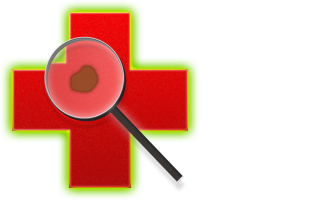Mole Mapping
Who should be molemapped?
This is a difficult question to answer. In an ideal world , every adult over the age of 18 years. Practically speaking the following people should have mole mapping:
> Patients with many moles
> Patients with atypical moles
> People with fair skin and a history of excessive sun exposure
> Patients with a personal history of melanoma
> Patients with a family history (1st degree relatives) of melanoma
> Finally anyone who is concerned about his moles.
What does this entail?
Many people have an incorrect understanding of mole mapping and mole scanning. Mole mapping does not entail going through a scanning machine and once you come out the other side all your moles have been mapped.
Mole mapping takes place in 2 stages:
1. Full body photography is done to record where the moles are located on the patient’s body
2. Each mole is photographed with a specialised dermoscopic camera. The picture is stored in the computer’s data base and the position of the mole is captured on the patient’s body. This is fairly time consuming – yet each mole is captured.
3. The image of the mole in then analysed, either by the dermatologist or by the computer itself.
4. On the patient’s return visit in the future, each image can be compared with it’s earlier picture.
How often should one be molemapped?
This would depend on the patient’s risk analysis.
Most people require an annual visit. However following the diagnosis of a melanoma, patients are seen every 3-6 months, for the following 2 years.
This is then followed by annual visits.
Is it important that molemapping is performed by properly trained specialists?
Absolutely yes.
Taking the pictures is the easy part. It is the understanding of the myriad of diagnostic clues that allows one to make the diagnosis of early stage melanoma. Mole mapping is not for doctors or nurses who occasionally dabble in this diagnostic forum; it is a difficult specialty and carries with it a great deal of responsibility.

Skin Cancer App
Worried about that suspicious looking mole? Skin cancer can affect anyone
of any age. Doctor Mole can help you identify if your little mole is perhaps a
big problem.
